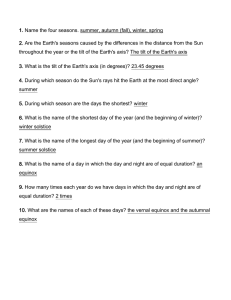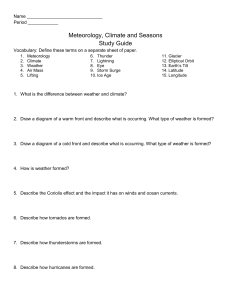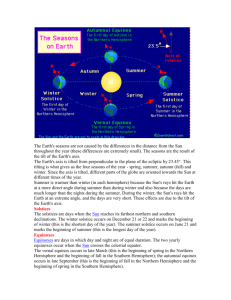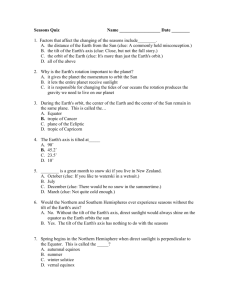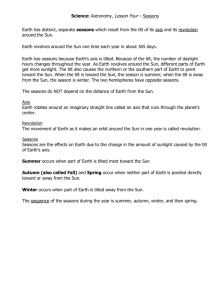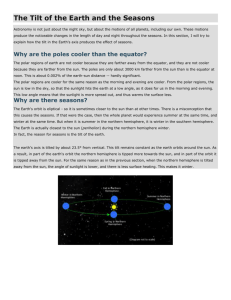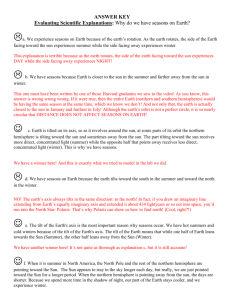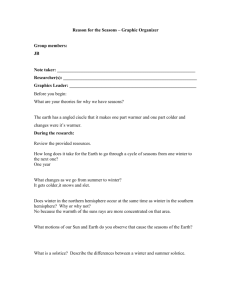Terrestrial Seasons Explanatory Diagrams
advertisement
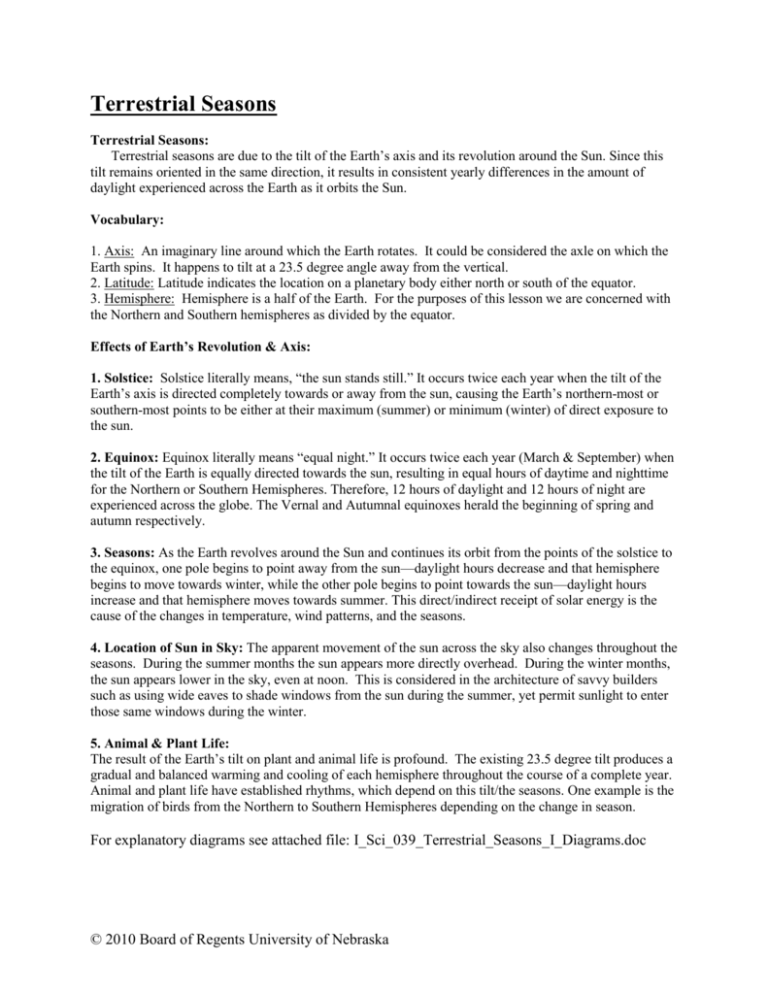
Terrestrial Seasons Terrestrial Seasons: Terrestrial seasons are due to the tilt of the Earth’s axis and its revolution around the Sun. Since this tilt remains oriented in the same direction, it results in consistent yearly differences in the amount of daylight experienced across the Earth as it orbits the Sun. Vocabulary: 1. Axis: An imaginary line around which the Earth rotates. It could be considered the axle on which the Earth spins. It happens to tilt at a 23.5 degree angle away from the vertical. 2. Latitude: Latitude indicates the location on a planetary body either north or south of the equator. 3. Hemisphere: Hemisphere is a half of the Earth. For the purposes of this lesson we are concerned with the Northern and Southern hemispheres as divided by the equator. Effects of Earth’s Revolution & Axis: 1. Solstice: Solstice literally means, “the sun stands still.” It occurs twice each year when the tilt of the Earth’s axis is directed completely towards or away from the sun, causing the Earth’s northern-most or southern-most points to be either at their maximum (summer) or minimum (winter) of direct exposure to the sun. 2. Equinox: Equinox literally means “equal night.” It occurs twice each year (March & September) when the tilt of the Earth is equally directed towards the sun, resulting in equal hours of daytime and nighttime for the Northern or Southern Hemispheres. Therefore, 12 hours of daylight and 12 hours of night are experienced across the globe. The Vernal and Autumnal equinoxes herald the beginning of spring and autumn respectively. 3. Seasons: As the Earth revolves around the Sun and continues its orbit from the points of the solstice to the equinox, one pole begins to point away from the sun—daylight hours decrease and that hemisphere begins to move towards winter, while the other pole begins to point towards the sun—daylight hours increase and that hemisphere moves towards summer. This direct/indirect receipt of solar energy is the cause of the changes in temperature, wind patterns, and the seasons. 4. Location of Sun in Sky: The apparent movement of the sun across the sky also changes throughout the seasons. During the summer months the sun appears more directly overhead. During the winter months, the sun appears lower in the sky, even at noon. This is considered in the architecture of savvy builders such as using wide eaves to shade windows from the sun during the summer, yet permit sunlight to enter those same windows during the winter. 5. Animal & Plant Life: The result of the Earth’s tilt on plant and animal life is profound. The existing 23.5 degree tilt produces a gradual and balanced warming and cooling of each hemisphere throughout the course of a complete year. Animal and plant life have established rhythms, which depend on this tilt/the seasons. One example is the migration of birds from the Northern to Southern Hemispheres depending on the change in season. For explanatory diagrams see attached file: I_Sci_039_Terrestrial_Seasons_I_Diagrams.doc © 2010 Board of Regents University of Nebraska

